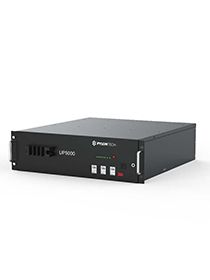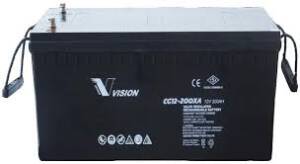For those of us who find it difficult selecting batteries and understanding the ratings, we thought it well to provide some information on ratings such as Volts, Amps, Amp-hours (Ah) and kilo Watt hours (kWh)
Amp-hours (Ah) are often used to measure the charge of a battery measured in Amps for one hour. These are normally used in all Lead-Acid, Lead- Carbon, AGM and Deep Cycle Gel batteries and are typically provided at C/10 and C/20 rates.
Where C rate is the rate at which a battery is charged or discharged in terms of its stated Ah capacity rating.
I.e For a lead-acid battery with a 200Ah rating, the C/10 rate is 200Ah/10 = 20Amps per hour. If the battery is discharged at a higher rate, the Amp hour (Ah) capacity and therefore the total available discharge energy will be lower than the stated Ah capacity.
Kilowatt -hours (kWh) are used to measure electrical energy measured in kilowatt or watts for one hour. These ratings are normally used on Lithium based batteries because their Amps per hour (Ah) rating is typically provided at 1C charge/discharge rate. I.e a 200Ah lithium-ion battery will provide 200A for 1hour.
When deciding on batteries you need to clearly understand the difference between these two measurements to ensure that you are comparing apples with apples before you make your selection.
The best is to convert Amp Hours to kilowatt-hours (kWh) and then compare the results. This is done by using the following formula: Kilowatt-hours (kWh) = Amp-hours (Ah) × Voltage of battery (V) ÷ 1,000.
For example, let us convert 200 Ah at 12 V to kWh.
(200 Ah x 12V) ÷ 1000 = 2.4 kWh or 2400 watts of energy can be consumed in one hour.
So, what can I run with this battery for 1-hour? Well you could use your washing machine, fridge, television and laptop for one hour but then the battery will be completely flat i.e.. discharged to 100%.
However, Lead Carbon batteries lifespan of 10- 15 years is based on a depth of discharge (DOD) between 40% – 50%, so to ensure that you get 3500 cycles out of your battery you can only use 40% of the 2400 Wh i.e. 960 Watts in one hour. In reality you can only use your washing machine for half an hour if you want to keep you battery in good health and then you would have to charge your battery again to 100% capacity before using it again.
Lithium batteries ratings are stated in kWh so if you use as example one of our 6.13 kWh Lithium battery packs, it means that you have 6130 watts of energy that can be consumed in one hour.
So what can I run with this battery for 1-hour? You could use your washing machine, fridge, television and laptop for 2 hours and you can also use your dishwasher for 1 hour at a depth of discharge of 100%.
However, Lithium batteries lifespan of 3500 cycles is based on a DOD of 80% thus to ensure that you get 3500 cycles out of your battery you can only use 80% of the 6130 Wh i.e. 4904 watts in one hour. In real terms this means that you could roughly use your washing machine, fridge, television, laptop and dishwasher for one hour.
So from the above illustration you can clearly see that you cannot just compare the Ah of the Lithium battery pack (210 Ah) with a 200 Ah Lead Carbon battery as they do not provide you the same amount of energy for consumption.
Remember thus:
Volts(V) X Current(I) = Power(Watts), i.e 12V x 200A = 2400W [An instantaneous power rating]
Volts(V) x Ampere-hour(Ah) = Energy (Wh) i.e 12V x 200Ah = 2400Wh [A energy capacity/utilization rating]
Click here to find a suitable battery to buy on our online shop.



